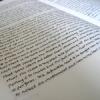Late 16Th Century Chancery Cursive?
-
Forum Statistics
357.4k
Total Topics4.7m
Total Posts -
Member Statistics
129,947
Total Members18,857
Most OnlineNewest Member
BobbyOK
Joined -
Images
-
Albums
-
USG 22
- By USG,
- 0
- 0
- 98
-
Pen Pics 2
- By K Singh,
- 0
- 0
- 96
-
more1
- By AmandaW,
- 0
- 0
- 27
-
namrehsnoom-19
- By namrehsnoom,
- 0
- 0
- 92
-
My photos
- By lamarax,
- 0
- 0
- 47
-


















.thumb.jpg.f07fa8de82f3c2bce9737ae64fbca314.jpg)









Recommended Posts
Create an account or sign in to comment
You need to be a member in order to leave a comment
Create an account
Sign up for a new account in our community. It's easy!
Register a new accountSign in
Already have an account? Sign in here.
Sign In Now